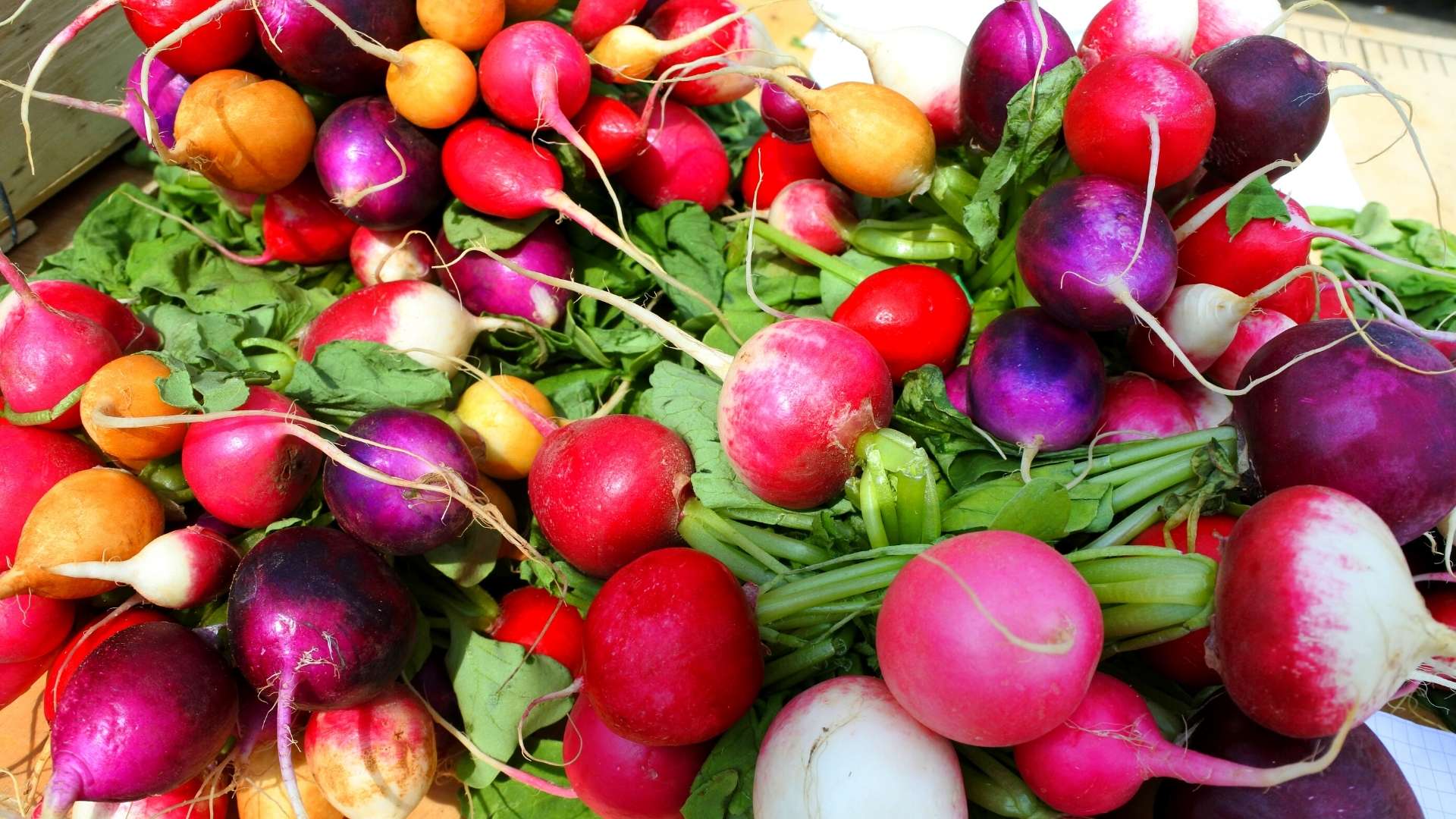Radishes: Spring’s Rad Crunchy Treat
Crisp and refreshing with a hint of spiced sweetness, radishes are a veritable spring treat often overlooked or not used to its full potential. These crunchy little vegetables pack a lot of flavor and nutrients, and they are extremely versatile. So don’t hesitate to make them a key ingredient in your favorite restaurant dishes.
Keep reading to learn everything you need about radishes: how they taste, where to find them, how to spot the different varieties, and finally, how to prepare these zesty little veggies to unleash and enjoy their unique taste.
What are radishes?
Radishes are small, root vegetables that can take on several colors and shapes. They’re widely appreciated for their crunchiness and slight spiciness, which ranges from mild to very spicy based on the radish variety consumed.
Native to China, radishes gradually spread over the world and reached the U.S at the end of the 16th century. Now they are cultivated all throughout the United States, with Florida and California driving the local production.
Is there more than one type of radish?
Yes. Radishes come in a wide range of shapes and sizes, so naturally there are several varieties of this root vegetable available in the world. Let’s have a look at a few of the most common types of radishes:
- Red Globe Radishes (aka table radishes or Easter Eggs) – the most commonly grown and sold type of radish. They are easy to spot through their (typically) red skin and white flesh.
- Daikon radishes (aka white radishes or Chinese radishes) – these are larger, usually white radishes, popular in Asian cuisines. Their spiciness is usually milder than that of red radishes.
- Black radishes (aka Spanish radishes) – as the name suggests, these radishes are covered with a deep black skin.
- Watermelon radishes – as far as color combinations go, the green skin – pink flesh is rather surprising for a radish. Still, watermelon radishes are a popular variety with a slightly sweet and spicy taste.
- French Breakfast radishes – this variety of radishes stands out through their elongated shape and two-tone (pinkish red and white) skin.
What do radishes taste like?
The taste of radishes can usually be described as spicy or pungent, sometimes sweet and slightly bitter, depending on the variety consumed. Their crisp piquant flavor is what makes them so appealing.
They are often consumed raw, either sliced or diced in a salad or as a quick snack. When cooked, they lose some of their spice and become sweeter. Radishes usually maintain some of their crunch even if they’re pickled, roasted, sauteed, grilled or stir-fried.
When are radishes in season?
The prime season for radishes is late spring through early summer (April to June). However, because they store very well, they can be found and bought at stores or through produce wholesalers all throughout the year. They don’t take long to grow (usually between 3 and 5 weeks), so stocks can be renewed on a regular basis.
What are the best ways to prepare radishes?
Raw, spicy radishes make wonderful snacks or garnishes for spring salads. You can serve them as part of a refreshing veggie tray, just in time for the warm spring days. Radishes mix excellently with many vegetables such as cauliflower, tomatoes, asparagus and broccoli.
However, this crunchy little vegetable invites a whole range of cooking possibilities, once you add some heat. So, if you really want to impress your guests with some creative dishes, don’t hesitate to add some radishes to the mix.
One of the best ways to prepare radishes is by roasting them. This will bring out their sweetness and tone down the spice, while still preserving the crunch we all know and love. Radishes pair surprisingly well with butter, so you can even experiment with this Radish-Chive Tea Sandwiches with Sesame and Ginger recipe as part of your breakfast menu or for appetizers.
Another smart way to use radishes in your menu is to pickle them with vinegar and spices. Once ready, picked radishes can add a welcome crunch and tangy flavor to sandwiches, salads or even charcuterie boards.
No matter how you choose to cook your radishes, remember to not throw away their leaves! Radish leaves are in fact edible, and they can be a great substitute for lettuce or spinach in salads. You can even turn them into pesto or stir-fry them with radishes and spices.
Where can I find fresh radishes?
If you wish to have a steady supply of fresh radishes for your restaurant, the best way to go about it is to collaborate with a local distributor of wholesale vegetables. Luckily, Riviera Produce stores a wide range of fresh produce, including several varieties of radish such as Watermelon, Daikon and Easter Egg radishes.
At the end of the day, radishes should be given a lot of credit. They pack a lot of flavor for their small size, they’re easy to grow and widely available at all times of the year. Their unique crunch and spicy flavor are a wonderful addition to any dish, not to mention they liven up any plate with their colorful skin.



